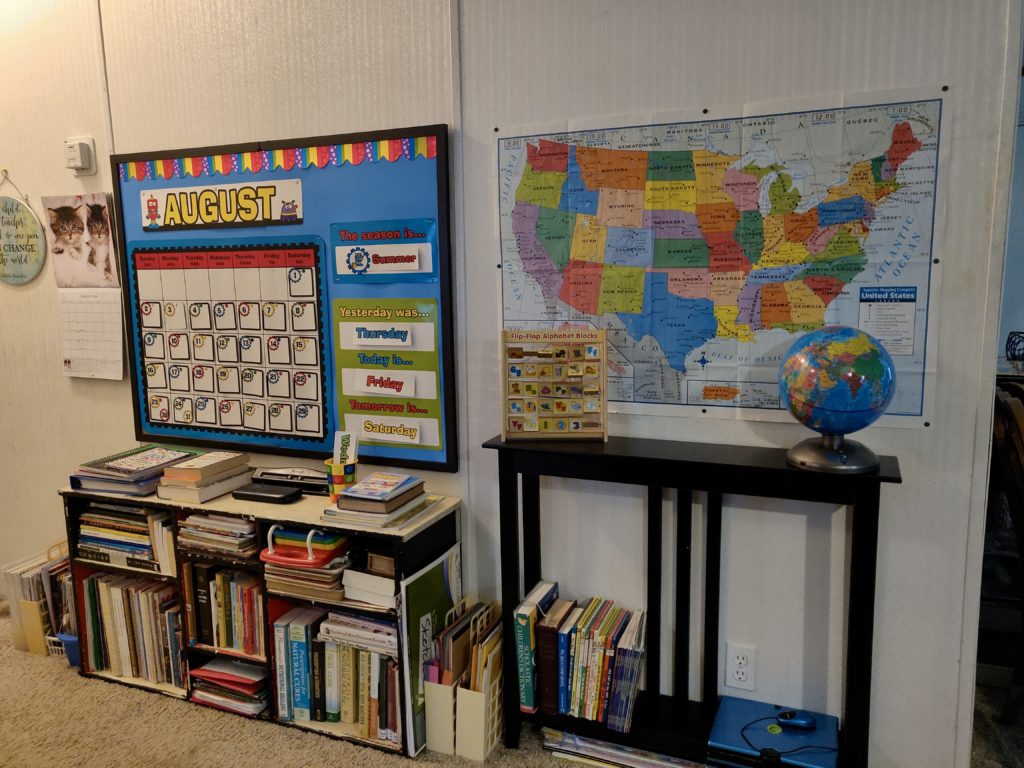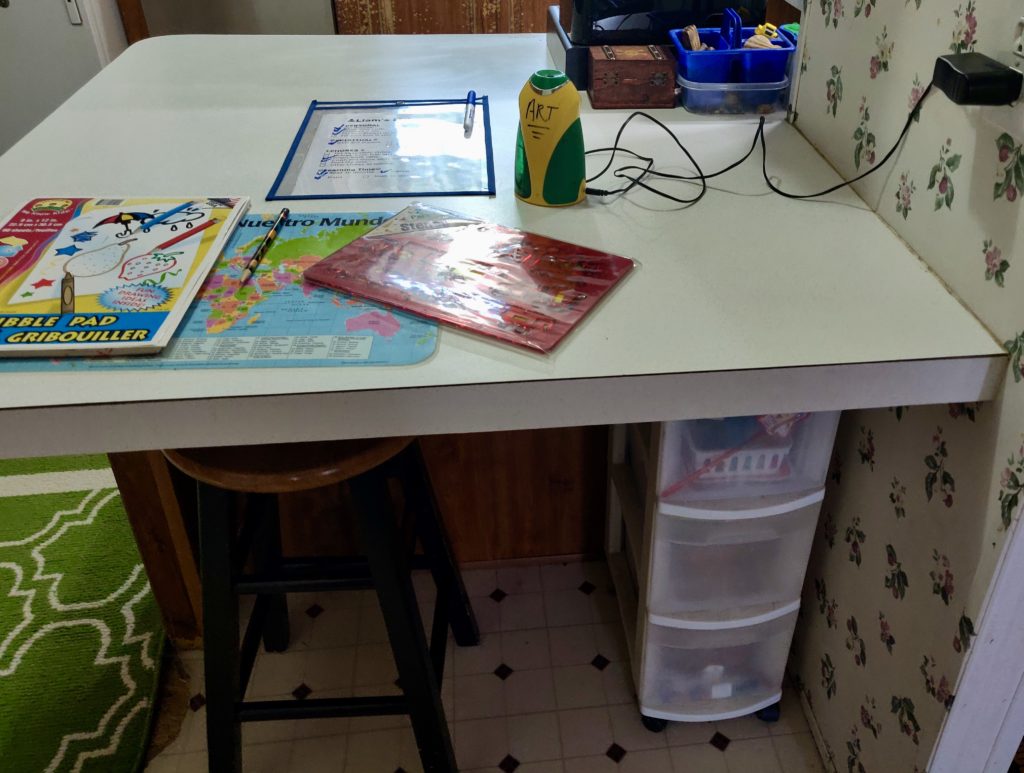The decision has been made: You’re homeschooling your child this school year.
Amid the mix of excitement and nervousness is another concern: Where will you put all the materials you have for school?
The good news is that you don’t need a separate room or expensive furniture to create a nice, functional space. I’ve homeschooled since 1993 and I’ve never had a school room.
My homeschool learning space
It’s simple to set up a learning space. To show you how, take a look at what I’m using in my current home:
- A bulletin board with a large calendar on it
- A hand-me-down bookshelf that my middle son no longer wanted
- A United States map (purchased at Dollar Tree)
- A thin console table with a globe purchased at Goodwill
Easy enough, right?
Keep reading for ideas on how you can set up an attractive, useful, inexpensively stocked learning space in your home for your first year or any year of homeschooling!
1. Use what you have
Look around your home to see what crates, boxes, tables, and chairs you may have that could be pressed into service for a desk, a place to set up a computer for your student, and somewhere to store books and other materials. You probably already have simple art supplies, a computer or tablet, headphones, a dictionary, children’s literature, and many other books.
It doesn’t make sense to spend a lot of money in your first year of homeschooling on these items, particularly if you think your child will be returning to public school. Most folks make a lot of changes during the first year, so using what you have keeps you from spending precious funds needlessly until you get a better feel for what you do need or want.
2. Make school happen in your living space
Having one room designated as the school room in your house can be nice, but it’s unnecessary.
If you’re anything like me, you are usually multi-tasking throughout your day. I’ve found that doing school with my seven-year-old son is much easier if we don’t go away to a separate room to do his studies. It works well for both of us to do school at the kitchen table or in the living room. I can put away dishes while he does his handwriting paper or fold a basket of laundry while he practices his reading.
Especially now, when many parents are working from home, you may find it helpful to bring your child into the room where you are working. I often have my son with me in my home office while he is watching educational videos on my tablet. The beauty of homeschooling is how it folds into what you are already doing to a certain extent.
Setting up a learning space may mean that you have some materials stored in one room and the rest of the materials stored in another room. Art projects are messy, so perhaps storing art supplies in the kitchen or laundry room makes the most sense while putting the computer and math materials works best in a corner of the living room or dining room. (Not many of us are eating in the dining room these days except for holidays!).
If you have a separate room that you can set up for school, it’s a great option as a place to keep everything in one area. Just don’t be surprised if school migrates to other rooms in the house.
3. Get organized
It’s vital to have your educational materials organized so that precious time isn’t wasted searching for the colored pencils or the teacher instruction manual for math.
In our home, we have plastic drawer organizers that are labeled by item name. If we want to use colored pencils, we know exactly where they are and where they go when we are done using them. Organizers come at various price points and I always see them at Goodwill or other thrift stores where they are about half of what they would cost at a regular retail store.
If you spent your whole budget on curriculum and can’t buy organizers, you can use household items that you already have. Most people have some shoe boxes hidden in their closet that they can use to store supplies. A really cool mug can be used as a pencil jar. A sturdy Amazon box can be covered with contact paper and used as a box to store your child’s notebooks and other school supplies.
One of my favorite places to buy organizers and other school needs is the dollar store. They have magazine holders, cardboard file boxes (you can assign one to each of your children for the storage of their materials and give one to yourself for your teacher manuals), plastic shoe boxes, labels to put on the boxes, school planners, calendars, bulletin board accessories, and more.
Wrapping up
So there you have it! Setting up an effective, simple learning space in your home doesn’t have to involve a great deal of effort and money. It’s as easy as reusing and repurposing things that you already have, adding a few inexpensively sourced items that are functional and attractive, and organizing them to make your space inviting to your student. Good luck and happy homeschooling!










Leave A Comment